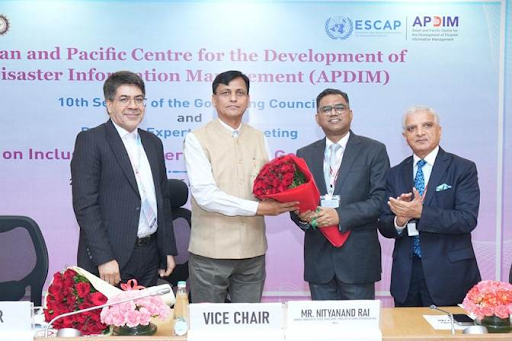





Disclaimer: Copyright infringement intended.
Context
Critical Materials
Factors that determine whether a particular raw material is a critical resource or not
|
HUBBERT'S PEAK Hubbert's peak refers to the point at which production rate is at its highest with demand for the resource rising, and after this it predicts a drop in correlation to the increased demand. During this drop, there may be dramatic differences in production and demand as demand continues to increase but production drops overall. |
EU’s Critical Raw Materials Act
Need of the Act
Aim of the Regulation
Rising Demand for Critical Minerals
Critical Minerals Listed
Strategic Partnerships
Recycling Capacity
READ ABOUT CRITICAL MINERALS FOR INDIA: https://www.iasgyan.in/daily-current-affairs/critical-minerals-for-india#:~:text=Antimony%2C%20Beryllium%2C%20Bismuth%2C%20Cobalt,%2C%20Zirconium%2C%20Selenium%20and%20Cadmium.
|
PRACTICE QUESTION Q. How many of the following are considered Critical Minerals in India? 1. Rhenium 2. Graphite 3. Aluminum 4. Tungsten How many of the above are correct? A) Only 1 B) Only 2 C) Only 3 D) All Four Answer: C) Only 3 List of Critical Minerals The list of critical minerals is as follows: Antimony, Beryllium, Bismuth, Cobalt, Copper, Gallium, Germanium, Graphite, Hafnium, Indium, Lithium, Molybdenum, Niobium, Nickel, PGE, Phosphorous, Potash, REE, Rhenium, Silicon, Strontium, Tantalum, Tellurium, Tin, Titanium, Tungsten, Vanadium, Zirconium, Selenium and Cadmium. PRACTICE QUESTION Q. Which of the following refers to Hubbert's Peak? 1. The point at which production rate is at its highest with demand for the resource rising. 2. The point at which production rate is at its lowest with demand for the resource rising. 3. The point at which production rate is at its lowest with demand for the resource constant. 4. The point at which production rate is constant with demand for the resource rising. Answer 1) The point at which production rate is at its highest with demand for the resource rising. |







© 2025 iasgyan. All right reserved